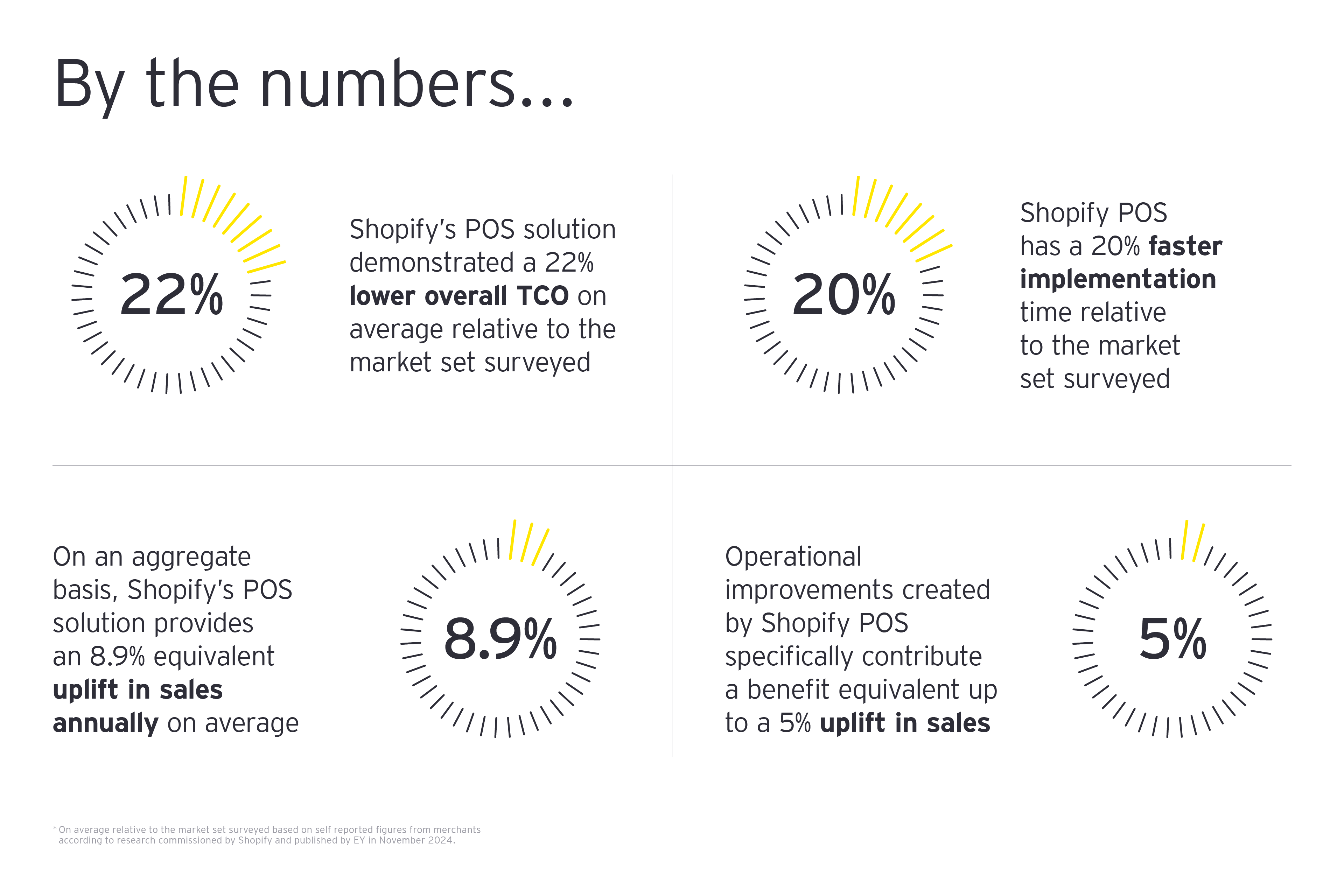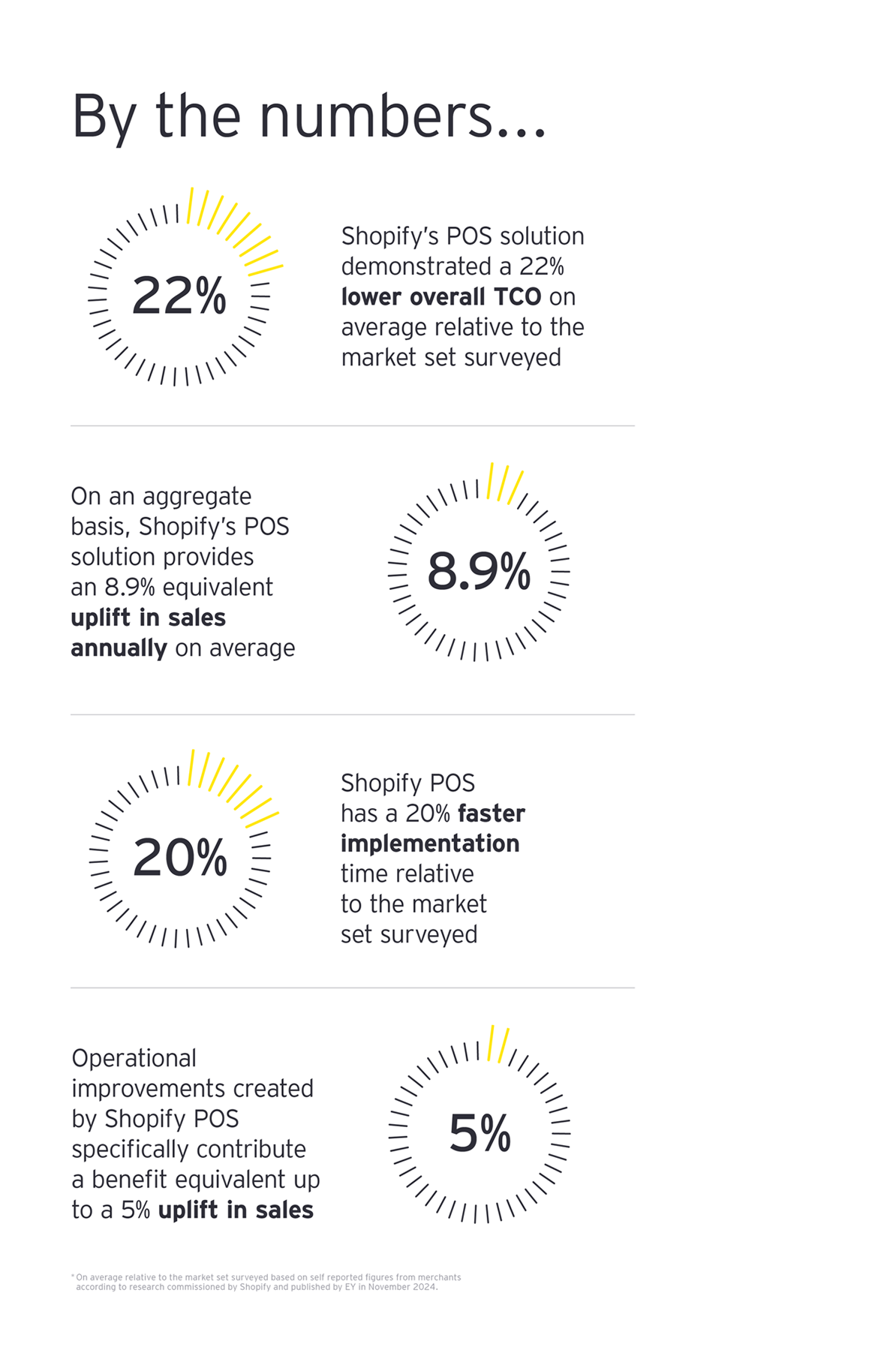EY refers to the global organization, and may refer to one or more, of the member firms of Ernst & Young Global Limited, each of which is a separate legal entity. Ernst & Young Global Limited, a UK company limited by guarantee, does not provide services to clients.

Contributors: Madeline Power, Samantha Rizzi, and Anna Di Bacco
How taking a unified approach to technology can help retailers future-proof their business and achieve cost efficiencies.
In Brief:
- EY teams developed this report to assess the continued disruption and evolution of the retail landscape, specifically as it pertains to the interdependencies of online and offline retail and the role of a unified commerce approach to managing these systems.
- Unified commerce moves beyond the concept of omnichannel. As a strategy, it centralizes sales channels, operations, backend processes and customer shopping experiences. This unification creates a better connection between in-store and digital customer experiences and is aimed at driving business growth and efficiencies while reducing costs.
- Underpinning a unified commerce strategy is the adoption of a Commerce Operating System (COS) – which is a set of technologies that support a retail organization’s basic functions in a centralized way.
- The role of point of sale (POS) systems within the COS is emphasized due to the importance of having tightly coupled POS and ecommerce platforms to unlock the most value from the COS.
- As part of EY research, we used Shopify as an example of a COS, and Shopify POS as an example of a solution that unifies online and offline retail while supporting essential operational requirements of middle-market and enterprise retailers.
Evolving buyer behaviours are changing the retail landscape quickly. Retailers seeking to keep pace with market changes are taking a unified approach to commerce technologies. Retailers are now moving away from servicing distinct sales channels to servicing customer "touchpoints," regardless of channel.
As brands seek to futureproof their business in today’s rapidly evolving retail environment, adopting a commerce operating system (COS) is crucial to achieving a unified commerce strategy. The shift to unified commerce requires retailers to rethink what and how technology is used to support their operations.
The optimal point of sale (POS) solution — a critical component of unified commerce — allows retailers to integrate and align retail systems across front- and back-end operations. The right POS system enables omnichannel operations, bolsters financial performance and supports data-driven insights to drive more strategic decisions and personalized customer experiences — all important aspects of unified commerce.
Shopify POS stands out as an example of a POS system that allows mid-market and enterprise retailers to realize benefits of a unified commerce strategy. Using multiple EY frameworks, we assessed several POS solutions in the market and gained a robust understanding of how Shopify specifically enables unified commerce and creates value while on average lowering TCO for mid-market and enterprise retailers. After analyzing Shopify against EY TCO attributes, we were able to validate that Shopify POS leads to cost efficiencies for both upfront and ongoing costs, and provides significant value benefits to retailers, including multiple revenue uplift enhancements, improved retail operations and mitigation of many costs normally associated with POS systems.
The simplification of, and increased access to, technology allows retailers to innovate more quickly and effectively, as employees and customers alike have greater technology sophistication, which enables an enhanced customer experience and increased operational efficiencies.
Warren Tomlin
EY-Shopify Global Alliance Leader, EY Canada


Future proofing retail: Embracing unified commerce.
Learn how to develop a unified commerce strategy for a seamless customer experience.


